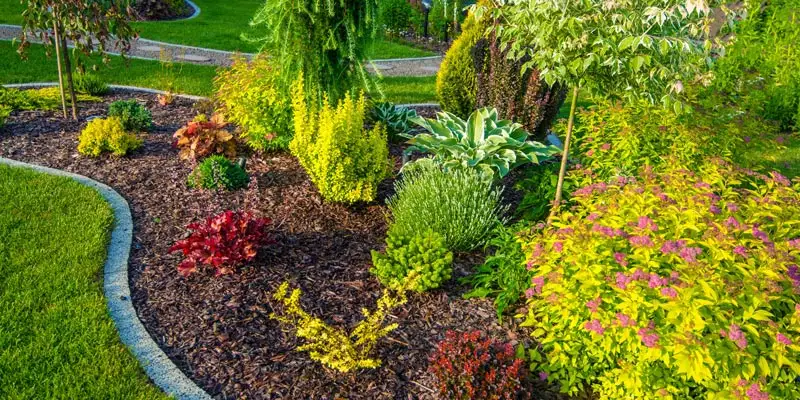Landscape Design for Beginners
Landscape Design for Beginners
Blog Article
Landscape Design Fundamentals Explained
Table of ContentsTop Guidelines Of Landscape Design9 Simple Techniques For Landscape DesignUnknown Facts About Landscape DesignLandscape Design for Beginners
Formal design theme. Credit History: Gail Hansen, UF/IFAS The lawn is an extension of the home where a variety of activities happen. A backyard can typically be divided into 3 locations: public (the front backyard), personal (the garden), and solution (usually the side yard). The area of task locations depends mostly on the sort of location, the size of area required, the sort of activity, and the preferred distance to other tasks and structures (Landscape Design).
The outdoors wall of your house typically works as the very first wall or beginning factor of an outside room. Inappropriate uses need to be divided, and related activities, such as food preparation and eating, should be assembled to make the backyard more effective and pleasurable. When using hardscape to produce spaces, utilize construction material comparable to that utilized in the house for connection from your house into the garden.
Connected rooms. Credit Rating: Gail Hansen, UF/IFAS Using comparable hardscape features and repeating plants draws the eye around the yard.
This provides a feeling of mystery that advertises exploration and exploration of the landscape. From a layout point of view, plant materials have three major features in the landscape: visual, structural and utilitarian. Visually, plants create an aesthetically positive environment and structurally plants arrange and define areas. Plants are practical due to the fact that they can transform the environment for the convenience of the individual by changing light, temperature level and humidity.
Not known Facts About Landscape Design
For emotional convenience plants are used as physical or suggested barriers for personal privacy and security. Physical obstacles obstruct both the view and access to a room and include fencings, walls and plant bushes.
Physical and implied obstacles. Credit Report: Gail Hansen, UF/IFAS For these reasons, the kinds of plants to be used (such as trees, bushes, or groundcovers) must be picked in the onset of planning. Plant types are picked for their functional capabilities to ensure that their future objective and needed area can be thought about at the same time.
The overhanging aircraft, the vertical aircraft and the ground plane must all be thought about to produce room. When the shape of a plant bed has been established, the plants ought to be massed (organized) and layered to attain visual unity and the desired amount of unit. The dimension of a plant mass will certainly depend upon the complete size of the lawn, the dimension of the private plants in the mass, and the focus or impact desired from the plant material.
Each plant mass is in front of, behind, or following to, another mass. Credit: Gail Hansen, UF/IFAS Repeating plants within a mass and duplicating masses with similar plants you can try these out links the yard with each other. The private plant qualities must be taken into consideration to effectively layer and mass plants.
Examine This Report on Landscape Design
All plant make-ups begin with the main framework plants, the large, primarily evergreen background plants-such as the trees and big shrubs. These plants different or enframe areas, control the dimension of the room, and offer the beginning point for picking the appropriate attributes of the 2nd layer, midground plants, for massing and infill.
Important points in the garden should be highlighted by the use of one-of-a-kind plants, distinctive structures, or yard ornaments. Marking thresholds or entryways to areas can be done with gateways, arbors, and steps, or via making use of unique and vibrant plants. The form and/or style theme of the garden will usually aid establish the important points and just how they must be highlighted.
Various other vital areas in the yard are prime focus, which is used to visually organize a landscaped area. The sort of prime focus usually relies on the checking out viewpoint. Various point of views or perspectives can expose different structures in the landscape that might need a variety of centerpieces. Contrasting structure, shape, dimension and shade will catch and hold the eye.
Some Known Facts About Landscape Design.
Plant forms. Credit History: Gail Hansen, UF/IFAS After type, texture is the following leading attribute of a plant; crude, medium and great structures can be used for contrast and focus in the landscape.

The enjoyable scent of plants, the audio of wind in the trees, the noise and appearance of water, and the shades and textures of sculptures, pots and yard furniture all include in the experience of the garden. One detail More Info that is frequently forgotten is the impact of light on the looks of the plants.
The entire yard modifications in feature and look over the program of the day, and the program of a year, as the light and temperature level change from morning to evening and period to period. Plant choice must think about a plant's development price, its fully grown dimension and type, and the maintenance it will need.
It is essential to understand the ultimate fully grown dimension of plants so they can be put in the right location Source and spaced properly when they are mounted. Offering plants space to grow is an obstacle because the usual fully grown size is typically based upon optimal expanding conditions and the environmental conditions of a site might trigger a plant to enlarge or stay smaller.
Report this page